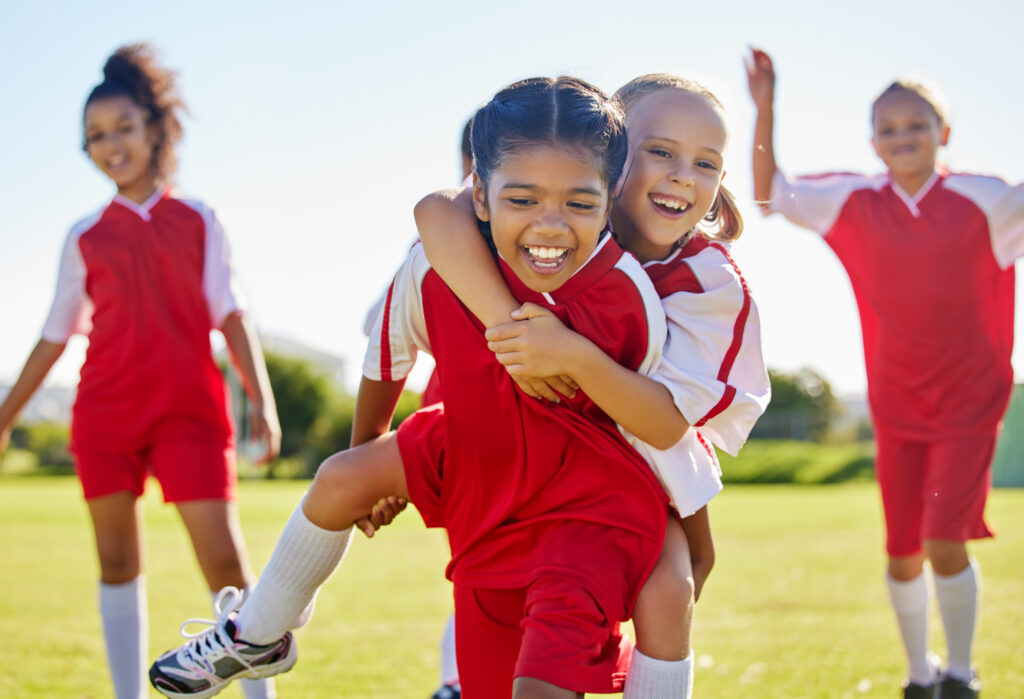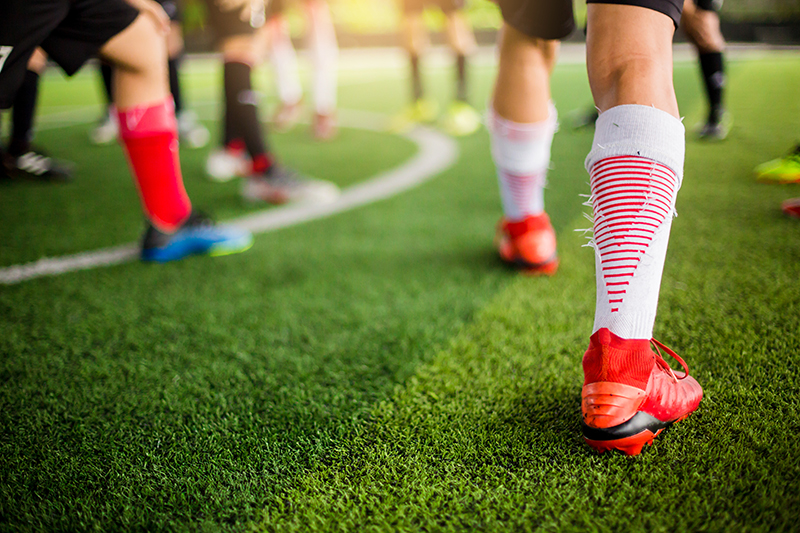High impact sports, such as soccer, basketball, and gymnastics, require exceptional physical strength and endurance. These sports often involve intense physical demands like jumping, sprinting, and rapid directional changes, all of which can increase the risk of injury, especially for female athletes. Studies have shown that female athletes are more prone to certain injuries compared to their male counterparts due to anatomical, hormonal, and biomechanical differences. Understanding the dangers associated with high impact sports can help mitigate the risks and ensure safe participation for young female athletes.
Understanding High Impact Sports and Their Physical Demands
High impact sports are characterized by repetitive, forceful movements that place significant stress on the bones, joints, and muscles. These activities require agility, power, and coordination, which often involve sudden accelerations and decelerations, heavy landings, and frequent pivoting. The physical demands of these sports can be particularly taxing on the musculoskeletal system, especially for growing athletes.
For female athletes, the intense physical nature of these sports increases the likelihood of developing overuse injuries, such as stress fractures and muscle strains. With the right training and prevention strategies, however, many of these risks can be reduced.
Common Injuries Female Athletes Face in High Impact Sports
When it comes to high-impact sports, female athletes are more prone to energy deficiency, particularly when they push their physical limits without proper nutrition or adequate rest. This, along with other various factors such as their physical development, sport participation patterns, and hormonal changes during adolescence, lead to a few common injuries.
Anterior Cruciate Ligament (ACL) Injuries
One of the most common and concerning injuries in high impact sports for female athletes is an ACL tear. The anterior cruciate ligament (ACL) is a critical stabilizer of the knee joint, and when torn, it often requires surgical intervention and long rehabilitation periods. Studies have shown that female athletes are 4.5 times more likely to experience ACL injuries compared to male athletes.
Stress Fractures
Stress fractures are another prevalent injury among female athletes in high-impact sports. These microfractures occur due to repeated stress or overuse and are common in sports like running and gymnastics. They can take weeks or months to heal, and if not properly managed, they may lead to chronic issues.
Overuse Injuries
Overuse injuries, such as tendinitis and muscle strains, are also common in high impact sports. These injuries are caused by repetitive motions and insufficient recovery time, making athletes vulnerable to long-term damage.
Joint Injuries
High impact sports put significant pressure on the joints, particularly the knees, ankles, and hips. Female athletes may experience conditions like patellofemoral pain syndrome (runner’s knee) and ankle sprains due to the constant strain placed on these joints.
Long-Term Health Risks for Female Athletes
While high impact sports can provide numerous benefits, there are potential long-term health risks for female athletes. Chronic injuries can lead to persistent pain, restricted mobility, and, in some cases, early-onset arthritis. Additionally, repeated joint injuries may result in permanent joint instability or degeneration.
One long-term concern for female athletes is the risk of early bone loss due to repetitive trauma and inadequate recovery time. This can affect their bone mineral density (BMD) and make them more susceptible to fractures later in life.
Hormonal and Bone Density Concerns in Female Athletes
Female athletes face unique hormonal challenges that can affect their overall health and well-being. Intense physical activity, particularly in high impact sports, can interfere with menstrual cycles, leading to conditions like amenorrhea (absence of menstruation). This disruption in hormonal balance can have a significant impact on bone density.
Peak bone mass, which typically occurs in young adulthood, is crucial for preventing future bone health problems. Athletes who experience hormonal imbalances may have a reduced bone mineral density, increasing their risk of stress fractures and other injuries. Studies have shown that female athletes with low bone density are more likely to suffer from fractures, especially in weight-bearing activities.
Preventive Measures and Safe Training Practices
To reduce the risks associated with high-impact sports, female athletes must prioritize injury prevention and safe training practices. Proper techniques, training routines, and attention to recovery can significantly minimize the chance of injury and promote long-term athletic success.
Proper Warm-Ups and Cool-Downs
Warm-ups and cool-downs are essential components of any athletic routine, particularly for high-impact sports. A proper warm-up gradually increases heart rate and prepares the muscles for the physical stress they will endure during exercise. Dynamic stretches and sport-specific movements help activate the muscles, improving flexibility and range of motion, while also enhancing performance. Cooling down after activity helps reduce muscle tightness and accelerates recovery by facilitating blood flow to the muscles, removing waste products from the body, and reducing the risk of post-exercise stiffness and soreness.
Cross-Training
Cross-training is an effective way to reduce the repetitive strain on the same muscles and joints that high-impact sports can impose. By engaging in a variety of activities, female athletes can develop different muscle groups and enhance overall fitness. Activities like swimming, cycling, or yoga allow for cardiovascular conditioning and flexibility without overloading the same muscle groups. Cross-training also offers mental benefits by breaking up the monotony of daily training and providing an opportunity for active recovery. It can prevent overuse injuries and allow specific muscle groups time to rest and repair.
Strength and Flexibility Training
Building strength and improving flexibility are key components of an effective injury prevention plan. Female athletes, in particular, benefit from strengthening muscles around key joints, such as the knees, hips, and ankles. This improves joint stability, reduces stress on vulnerable areas, and enhances overall performance. Regular strength training increases muscle endurance and power, while flexibility exercises help prevent strains by allowing muscles to move through their full range of motion. A well-balanced routine that targets all major muscle groups, with an emphasis on the lower body, core, and stabilizing muscles, can go a long way in preventing injuries.
Proper Rest and Recovery
Rest and recovery are just as important as training for injury prevention. Overtraining or lack of recovery time can lead to overuse injuries, fatigue, and decreased performance. Female athletes should incorporate regular rest days into their schedules to allow the body to repair and rebuild muscle tissue. Additionally, rotating sports or activities throughout the week can help prevent repetitive motion injuries by distributing the physical stress on different muscle groups. Active recovery, such as gentle stretching or low-impact movement, can promote circulation and alleviate muscle soreness.
Nutritional Support
A well-balanced diet is vital to support the training and recovery needs of female athletes. Nutrients like calcium and vitamin D are essential for maintaining bone strength and density, while protein is necessary for muscle repair and growth. Female athletes should prioritize a diet that includes lean proteins, whole grains, fruits, vegetables, and healthy fats to fuel their performance and recovery. Proper hydration is equally important to maintain energy levels, regulate body temperature, and prevent dehydration-related injuries. Consulting a nutritionist or sports dietitian can help female athletes tailor their nutrition plans to meet their specific training and recovery needs.
Request an Appointment
If you or a young female athlete in your life is experiencing sports-related injuries or concerns, don’t hesitate to reach out. At The Pediatric Orthopedic Center, we offer specialized care for female athletes, with a focus on prevention, treatment, and recovery. Our team of pediatric orthopedic surgeons and sports medicine specialists is dedicated to providing the highest level of care to ensure safe participation in high impact sports. Call 973-538-7700 to schedule an appointment or fill out our appointment request form today.



